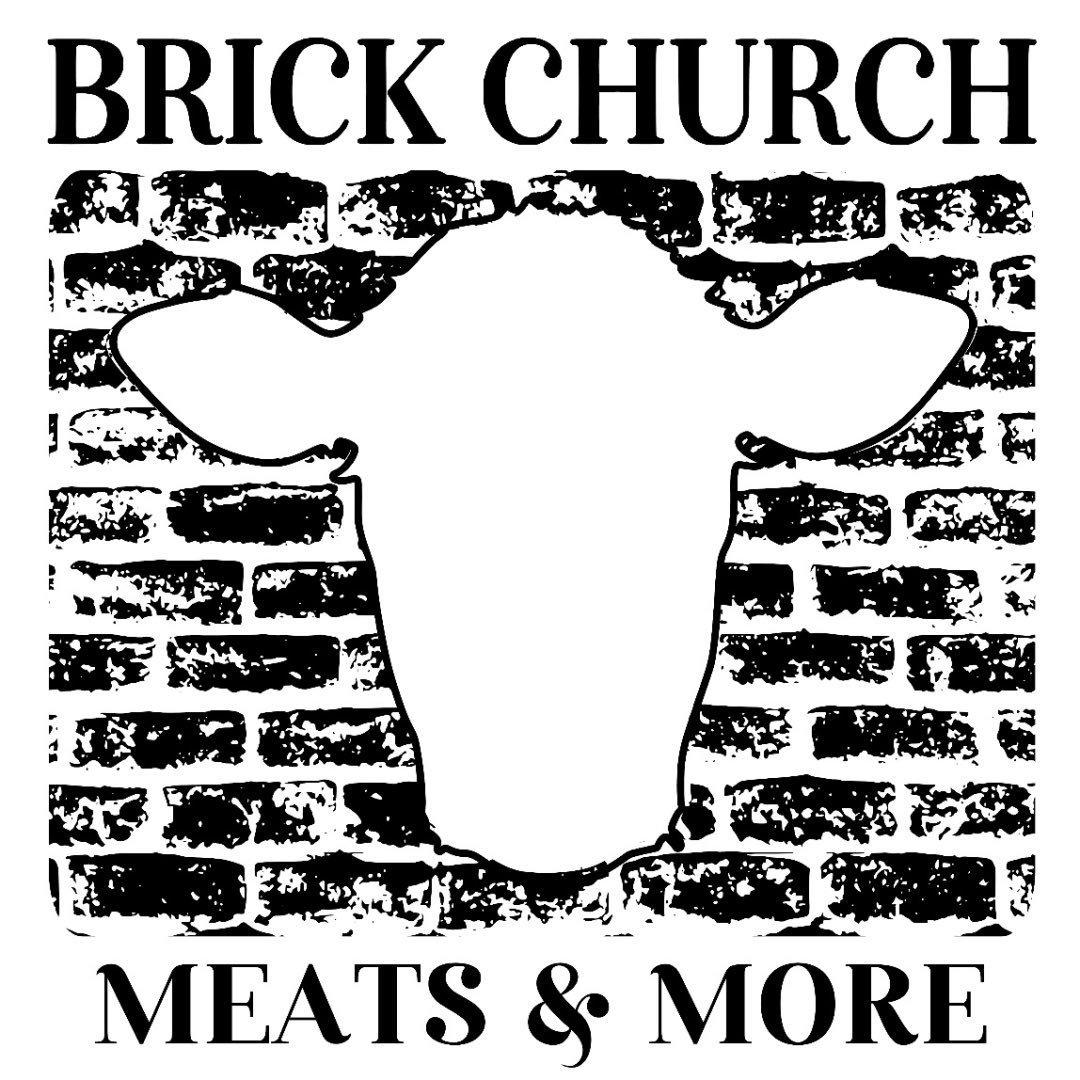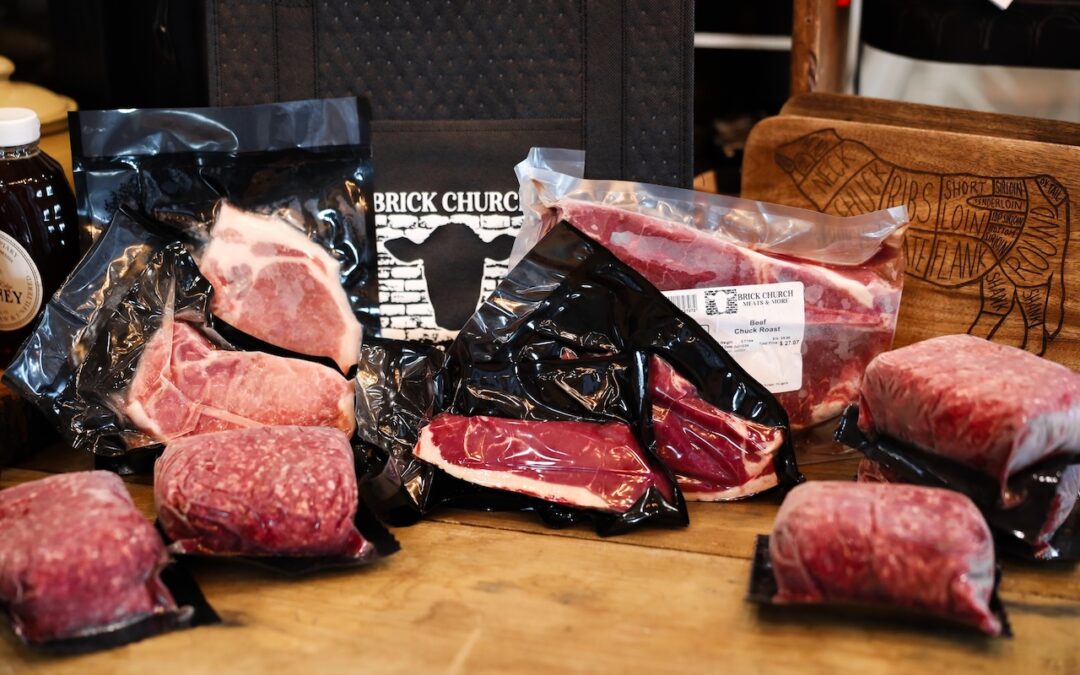When you’ve made the decision to have your meat custom processed, you’re investing in freshness, flavor and quality. Preserving that quality once the meat reaches your freezer is just as important as how it’s raised and prepared. At Brick Church Meats & More, we want you to get the most out of your meat long after it leaves our facility. That means proper storage, good freezer habits and knowing what to watch for over time.
Start with Proper Packaging
The first and most important step in preserving your meat is ensuring it’s been packaged correctly. At Brick Church Meats & More, we use professional-grade rollstock vacuum packaging to seal in freshness and protect your meat from freezer burn. This packaging method removes the air that causes oxidation and moisture loss which are two of the biggest threats to meat quality in long-term storage.
If you’ve chosen to repackage smaller portions at home, be sure to use high-quality freezer bags or butcher paper and push out as much air as possible. Label each package clearly with the cut name and date.
Keep a Consistent Freezer Temperature
Your freezer should always stay at or below 0°F. Fluctuating temperatures can cause ice crystals to form and thaw repeatedly inside the packaging which leads to textural damage and loss of flavor. Avoid opening your freezer frequently or leaving the door open for extended periods of time especially in warmer months.
Investing in a freezer thermometer is a simple way to keep track of the temperature without relying solely on appliance settings. If you ever experience a power outage or appliance failure you’ll know exactly when temperatures have risen into an unsafe zone.
Organize by Date and Cut
One of the most common reasons people lose quality in their freezer meat is because they forget what they have or they don’t rotate properly. Organize your meat by type and by processing date with the oldest packages in front. This ensures you use everything in a timely manner and nothing gets lost at the bottom or back of the freezer.
Keep a simple inventory list on the door or a magnet so you know what you have at a glance. Mark off items as you use them and you’ll save both time and money.
Use Meat Within the Recommended Time
While properly frozen meat remains safe to eat indefinitely according to USDA guidelines, the quality does decline over time. For best results:
-
Ground beef and sausage should be used within 3 to 4 months
-
Steaks roasts and larger whole cuts can maintain quality up to 12 months
-
Pork and lamb have slightly shorter timelines and are best within 6 to 9 months
-
Any vacuum-packed items can last longer if unopened and stored well but aim to rotate within a year
The longer meat stays in the freezer the more likely it is to suffer from changes in color texture and taste. Sticking to these timelines helps you enjoy your meat at its peak.
Watch for Signs of Freezer Burn or Spoilage
Even with the best storage methods freezer burn can occasionally happen especially if packaging is damaged. Freezer burn looks like gray or white dry patches and while it won’t make the meat unsafe it can negatively affect taste and texture. Trim those areas away before cooking or use that meat in stews or ground applications where the dryness will be less noticeable.
If you ever open a package and notice an off smell slimy texture or unusual discoloration do not use it. When in doubt throw it out.
Don’t Thaw and Refreeze
Thawing meat and then putting it back in the freezer without cooking is a sure way to reduce quality and increase risk. Always thaw meat in the refrigerator not on the counter and only take out what you’re ready to cook. If you thaw more than needed cook the extra and freeze the cooked product instead.
Final Thoughts
Having your meat processed locally is a smart choice and preserving that investment at home is simple with the right habits. Quality starts at the farm and continues in your own kitchen when you store and manage your meat properly. At Brick Church Meats & More we’re here to help you make the most of every cut from the time it’s processed to the moment it hits your plate.
Beef Cut Pricing
Custom Harvest…………………$50
USDA Harvest…………………….$100
Processing………………………….$1.25/lb hanging weight
Rollstock packaging……………$1.55/lb
Rollstock Packaged Patties…$1.65/lb
Over 30 months old…………..$50 additional disposal fee
Over 14 day hang time………$5/day
One Time Labeling Setup….$100
Pork Cut Pricing
Custom Harvest…………………………$30
USDA Harvest…………………………… $60
Processing…………………………………$0.90/lb hanging weight
Rollstock Packaging for Retail……..$1.20/lb
Bacon…………………………………. $2.50/lb
(CUSTOM ONLY. NO USDA BACON)
One Time Labeling Setup…….. $100
Lamb & Goat Cut Pricing
Custom Harvest…………………………$30
USDA Harvest……………………………$60
Processing…………………………………$0.90/lb hanging weight
Rollstock Packaging for Retail…….$1.20/lb
One Time Labeling Setup…….. $100
$100 MINIMUM ON LAMBS & GOATS
How do you want your meat processed?
We want your meat processed just the way you like it. That’s why we ask every customer to fill out a cut sheet for each animal whether it’s a cow, pig, lamb or goat. These simple forms tell our butchers exactly how to cut, wrap and package your order. You can either download a printable PDF to fill out by hand or submit your instructions online through a secure form that goes straight to our team. Just pick whichever option’s easiest for you below.

